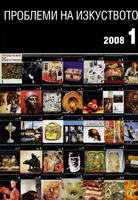Подвиги Геракла и священный брак: к истории изобразительных сюжетов „варварского искусства“ в 1 тыс. н.э.
Heracles Heroic Deeds and Sacred Marriage: Motifs of the “Barbarian” Art from the 1st Millennium A.D.
Author(s): Vladimir PetruhinSubject(s): Cultural history
Published by: Институт за изследване на изкуствата, Българска академия на науките
Summary/Abstract: Heracles was a popular figure in the antique and barbarian art, first of all in the art of Scythian and Thracian periphery of the antique world. In the Scythian area he was interpreted as a forefather of the Scythes by the Greek masters (dressed in the Scythian manner), in Thrace (Rogozen) they used the antique motifs. The motif of marriage (sacred marriage) of the hero as forefather was the most essential in the local Barbarian traditions. During great migrations the barbarian art became mainly nonfigurative, but some items survived the old antique (Byzantine) traditions. The mount of scabbard from Grinev (Ukraine) first centuries A.D. with a beast fighting snake, gryphon, sacred marriage and hero-horsemen is one of the most ancient examples of the tradition popular among the German tribes. The similar motifs one can see on the Avarian tongue-piece of the belt from Dolné Dunajevice (8th century): a beast (boar?), sacred marriage, fighting of a hero with the beast (centaurs or lion), hero alone with a skin and club. J. Dekan interpreted the composition as manifestation of Heracles’ heroic deeds: boar (killed by the hero), struggling with Hippolyte, queen of the amazons, killing of centaur. These pieces of the barbarian art are the unique witnesses of the survival of the antique tradition in the Dark Ages: once again Heracles’ theme became popular in the Romanesque and Byzantine art in the 11th – 12th centuries.
Journal: Проблеми на изкуството
- Issue Year: 2008
- Issue No: 1
- Page Range: 3-5
- Page Count: 3
- Content File-PDF

